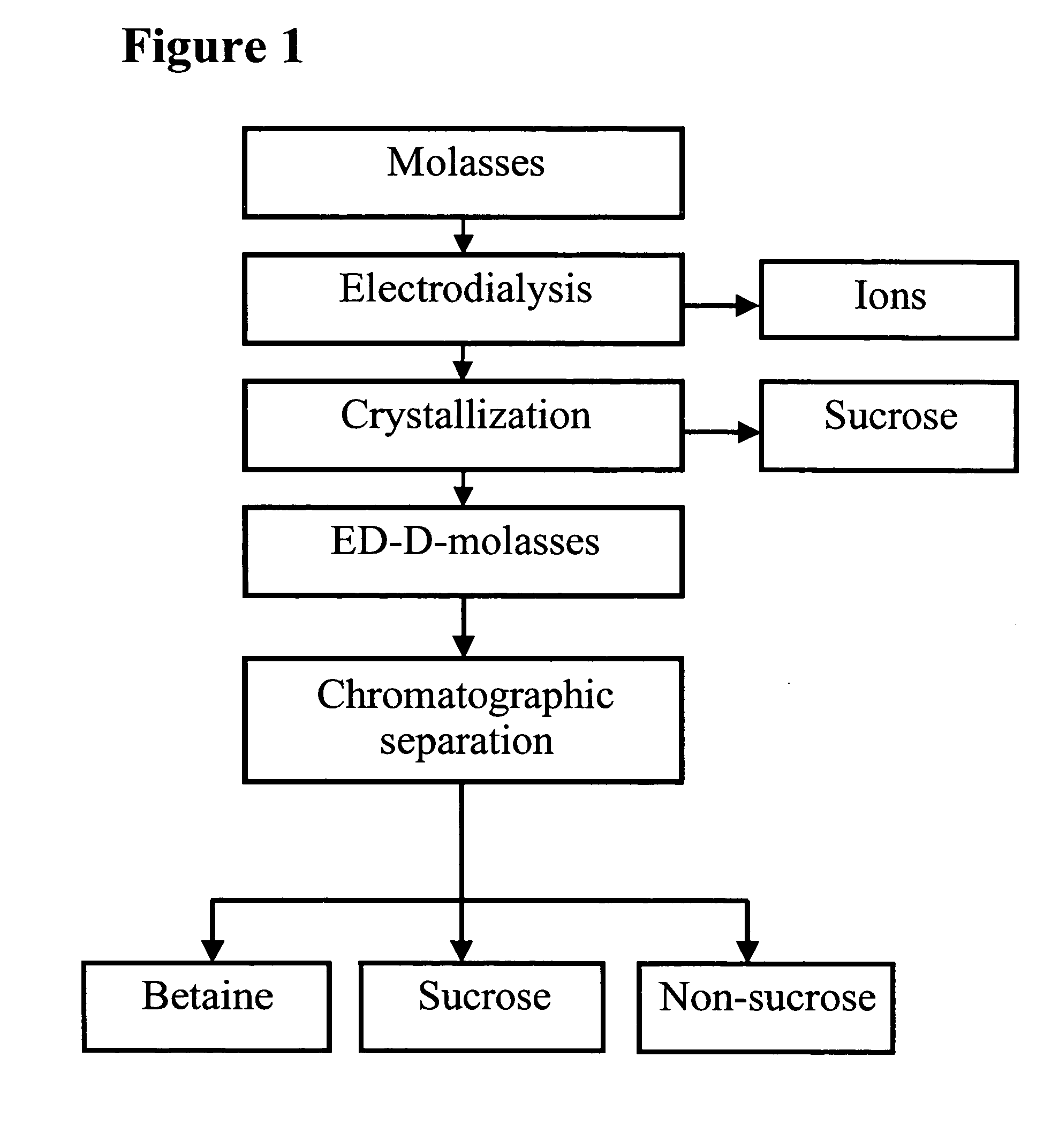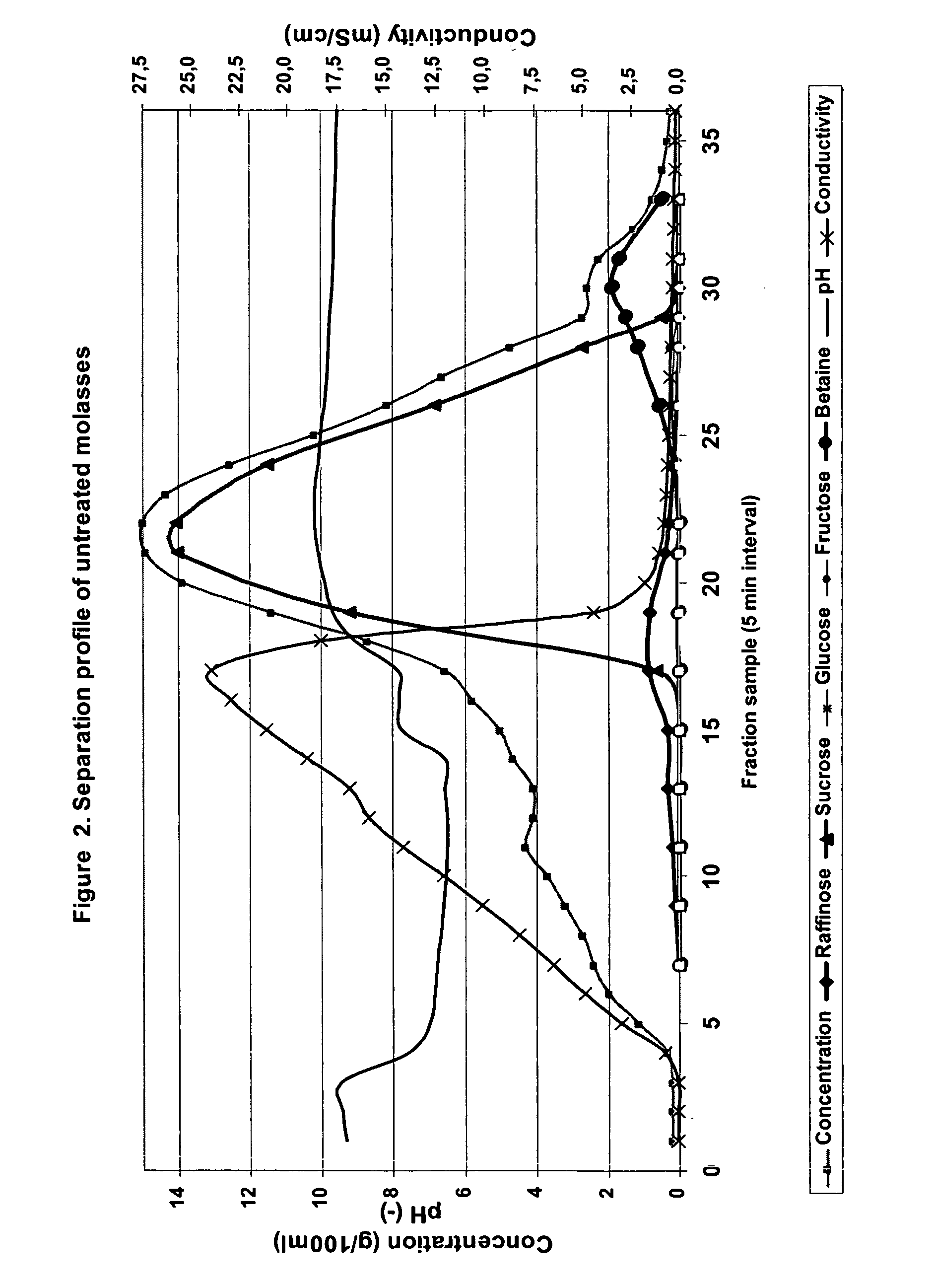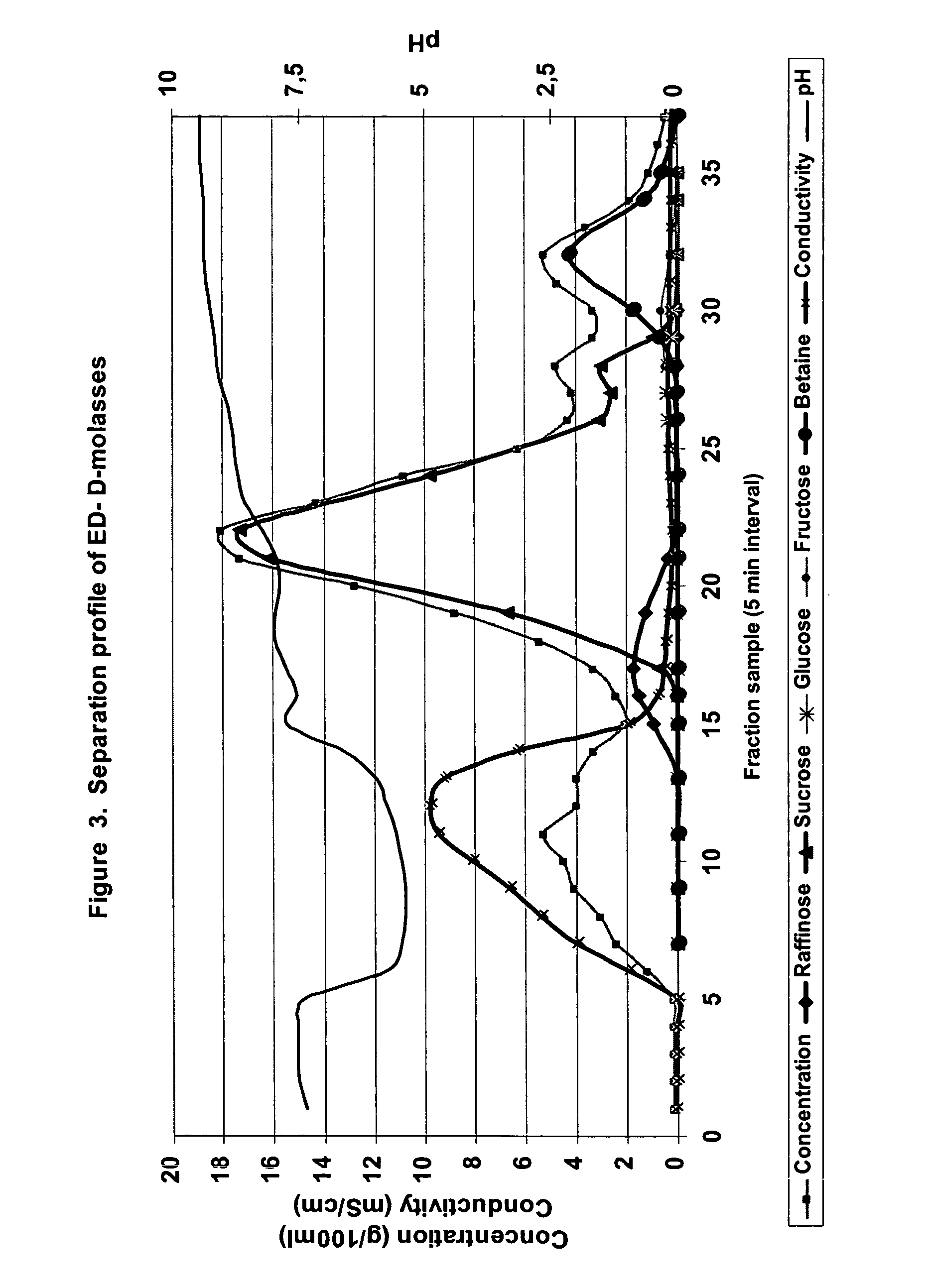Process for the recovery of sucrose and/or non-sucrose components
a technology of non-sucrose and sucrose, which is applied in the field of recovery of sucrose and/or non-sucrose components, can solve the problems of difficult cleaning of films, low recovery efficiency of ed, and low recovery efficiency so as to reduce energy requirements and improve the overall efficiency of recovery. , the effect of reducing the need for evaporation of enriched product fractions
- Summary
- Abstract
- Description
- Claims
- Application Information
AI Technical Summary
Benefits of technology
Problems solved by technology
Method used
Image
Examples
example 1
[0077] Example 1 comprises the following steps:
[0078] 1) Electrodialysis (ED) of normal sugar beet molasses producing purified ED-molasses;
[0079] 2) Evaporative and cooling crystallisation of the purified ED-molasses producing an ED-D-massecuite;
[0080] 3) Centrifugation of the ED-D-massecuite producing an ED-D-sugar and an ED-D-molasses exhausted of sugar and of similar sucrose purity to normal factory molasses;
[0081] 4) Refining of the ED-D-sugar to white sugar in the traditional way by re-dissolving and re-crystallisation;
[0082] 5) Chromatographic separation of the ED-D-molasses and recovery of the sucrose and the non-sugar components or direct uses of the good tasting ED-D-molasses.
[0083] 6) Crystallisation of the sucrose fraction and recovery of white sugar.
[0084] Molasses Composition
[0085] The beet molasses fed to the ED unit was analysed as follows:
TABLE 1Analysis of normal molasses% On Refractometer Dry Substance (RDS)Sucrose57.8Glucose0.03Fructose0.08Betaine5.3Raff...
example 2
(Reference Example)
[0112] Example 2 comprises the following steps:
[0113] 1) Filtration and softening of normal sugar beet molasses;
[0114] 2) Chromatographic separation of the molasses;
[0115] 3) Recovery of sucrose and non-sugar fiactions;
[0116] 4) Crystallization of the sucrose fraction and recovery of white sugar.
[0117] Molasses Composition
[0118] The untreated molasses was pretreated by diluting to Brix 60 g / 100 g and carbonating by pH adjustment with NaOH and addition of sodium carbonate. Afterwards the carbonated solution was filtered with a Seitz pressure filter. The pH of the feed solution was then adjusted to pH 8.9 before the chromatographic separation. Final dilution was done to 36.2 g RDS / 100 g. Conductivity of the solution was 19.4 mS / cm and calcium content 0.006% on RDS. The composition of the prepared feed liquor was analyzed as follows:
TABLE 9Chromatographic SeparationSugar components,betaine% on RDSSucrose57.8Glucose0.8Fructose1.0Betaine5.3Raffinose2.2
[0119]...
example 3
[0130] In this example the chromatographic separation was done using a Simulated Moving Bed (SMB) pilot plant. To provide sufficient ED-D-molasses for this test work crystallisation and centrifugation of the ED-molasses was done on a factory-scale.
[0131] In the SMB tests a 2-profile separation sequence was created and the separation results for the ED-D-molasses were compared with those obtained of the original untreated molasses.
[0132] Example 3 comprises the following steps:
[0133] 1) Electrodialysis (ED) of normal untreated sugar beet molasses to produce a purified ED-molasses;
[0134] 2) Evaporative crystallisation of the purified ED-molasses on factory-scale using a 30 m3 batch vacuum pan to produce an ED-D-massecuite;
[0135] 3) Cooling crystallisation of the ED-D-massecuite from 80° C. to 50° C. over 48 hours by natural cooling in a stirred strike receiver;
[0136] 4) Centrifugation of the ED-D-massecuite by a continuous centrifuge producing an ED-D-sugar and an ED-D-molasses ...
PUM
| Property | Measurement | Unit |
|---|---|---|
| particle size | aaaaa | aaaaa |
| particle size | aaaaa | aaaaa |
| temperature | aaaaa | aaaaa |
Abstract
Description
Claims
Application Information
 Login to View More
Login to View More - R&D
- Intellectual Property
- Life Sciences
- Materials
- Tech Scout
- Unparalleled Data Quality
- Higher Quality Content
- 60% Fewer Hallucinations
Browse by: Latest US Patents, China's latest patents, Technical Efficacy Thesaurus, Application Domain, Technology Topic, Popular Technical Reports.
© 2025 PatSnap. All rights reserved.Legal|Privacy policy|Modern Slavery Act Transparency Statement|Sitemap|About US| Contact US: help@patsnap.com



